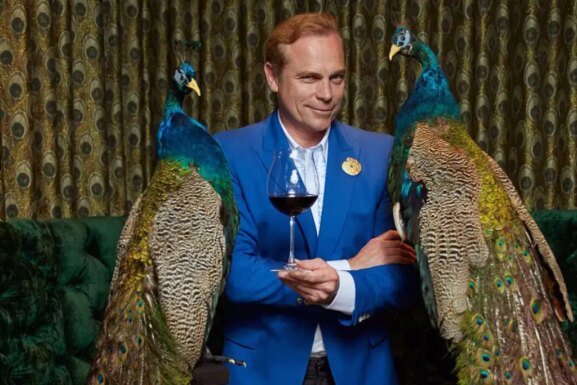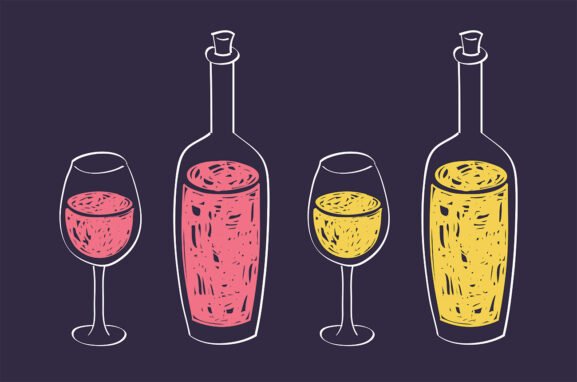Women Are Leading the Future of Cava
In 1978, when prominent Cava winemaker Montserrat Mascaró went to school for wine, she was the only woman in her class. By the time she finished studying in 1984, many more women had joined the classroom, interested in studying oenology.
“Until the ‘80s, the wine world was 90% men,” says Mascaró, CEO and technical director of the producer Mascaró. “Now, women are working with the vines and working in the land. They are not just in the office or the export part of wine. They can do everything.”
Mascaró is the first woman in her family to lead the three-generation-old brand of Cava, vermouths, brandy and spirits. She has led the estate towards ecological and sustainable viticulture and has introduced a line of vermouths inspired by the flora and fauna of the land. She recalls being in the vineyards and cellar with her father and grandfather, helping in all parts of production.
“It has not been a problem to be a woman for me,” she says.
Smashing the Patriarchy
Mascaró, though, is an exception and that may be because she has no brothers. Historically, most vineyard estates are passed onto the sons. Mascaró’s family training led her into her role as manager of the company, which now employs about an equal number of men and women. However, for women wanting to step into leadership roles in Cava, it can still be hard without family ties.
“We need more women in Cava, not only because they are from the family,” says Eva Plazas Torné, president of Cava Women. The organization, founded in 2021, is dedicated to developing and supporting women in the Cava winemaking world, from directors and CEOs of companies to sommeliers, winemakers, journalists and harvest workers.
“Like Marta Vidal Ollé from Vallformosa,” says Torné. “She is the CEO of the company and she is not from the family. In Spain, it’s very patriarchal. Now, fortunately, it’s changing.”
Mascaró, who was born into a family business, agrees. “Normally, you become a winemaker by heritage,” says Mascaró. “And now I am seeing young women starting their own small companies.”
Similarly, winemakers Marta Casas and María Elena Jiménez were not born into wine but married into it at Parés Baltà. The sister-in-laws, both scientists, retrained as oenologists to lead the winemaking at the Cava house in Penedès. They introduced organic (since 2002) and biodynamic (since 2012) practices to the estate, making gorgeous, age-worthy wines.
Historical Changes to the Labor Gap
Both Torné and Mascaró link the rise of women-led workforces to the Spanish Civil War, which spanned from 1936 to 1939. As is with most major wars, the men of the family may get injured or killed. In these moments, women took charge in all aspects of work, including winemaking, leading to a boom in female labor. Spain has come a long way in recent years in not just a growing women’s workforce, but also introducing labor laws that reduce gender wage gaps.
According to the EU Pay Transparency Directive, which addresses the 12.7% gender pay gap in the European Union, Spain fares better than most countries in the area. Spain’s gender wage gap hovers at about 9%, as of 2023. This means women earn 9% less than men per hour.
Compare that to France, which sits at about 14%, Germany at 17.7% and Austria with one of the highest wage gaps at 18.4%. In the U.S., the wage gap is at 16%.
Spain has strict pay data reporting laws that help minimize the wage gap. By 2026, all large employers (over 250 employees) must report gender pay gaps to the EU Directive. Spain already has similar laws for employers with 50 or more workers.

A New Generation of Women in Wine
This is good news for women workers in the Cava industry. With informational resources and communal support from organizations like Cava Women, wine professionals like Gemma Torelló of Agustí Torelló Mata, Marta Guilera of Heretat Guilera, Mireia Pujol-Busquets of Alta Alella and Meritxell Juvé of Juvé & Camps are only some of the women being shown a well-deserved spotlight in Cava right now.
“Now is the moment of women winemakers,” says Mascaró. She is optimistic about the new generation of women entering Cava today, like Marta Torné of Cava Torné and Bel, a 24-year-old, bright-eyed winemaker.
Torné describes how her oenology classroom looks different from Mascaró’s time. “The first year there were three or four girls in the classroom, and like 13 men,” says Torné. “The last two years there were many more girls; it was more equal.”
Torné’s family have been grape growers for five generations. Her father built their cellar in 1995, when the family took on wine production. Torné has been a cellar rat since she was 16 and is the first woman winemaker in the family. She says she learned how to prune grapes from her grandfather, and the bug never left her.
“For me, it’s not like a man’s job or a woman’s job,” says Torné. “We have changed our minds with these things. It’s normalized that anyone can do any job.”
And it’s not just Cava. There were 20,051 female vineyard owners in Spain in 2020, according to a 2023 report by Spain’s Wine Interprofessional Organization. That is 30.4% of the country’s total vineyard ownership, compared to 27.9% in 2009. Women’s ownership of estates and vineyards in the country is growing.
The Cava women winemakers we spoke to share a common sentiment: they are not competing with men to see who can make better wine. Instead, they are simply doing it as an equalizer of the craft. Winemakers like Mascaró, with decades of work under her belt, are the leading voices for progress in Cava and examples of success.
“Wine is made by a person; it’s not made by a woman or a man,” says Mascaró. “Of course, we are different, perhaps women take care of some things better and men in others. But in the end, the wine reflects your personality. It’s a project of life.”
More Women in Wine Coverage

From the Shop
Find Your Wine a Home
Our selection of white wine glasses is the best way to enjoy the wine’s subtle aromas and bright flavors.
Published: September 23, 2024

